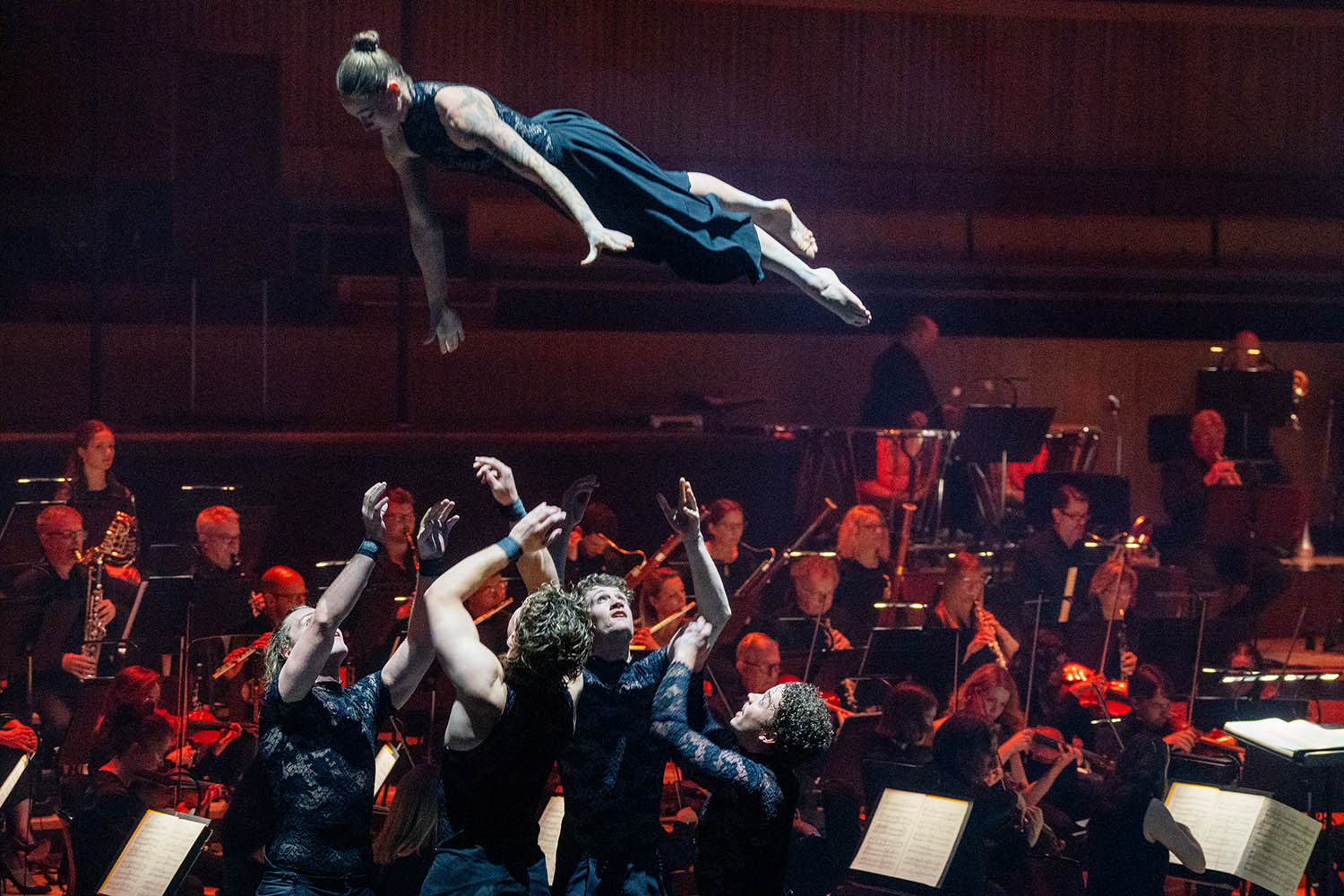Daphnis and Chloé
Royal Festival Hall, London SE1
The best-known dance version of Daphnis and Chloé was choreographed by Frederick Ashton in 1951, but it hasn’t been seen on British stages since 2012. Its absence is perhaps partly to do with a plot full of pillaging pirates and lovelorn shepherds, but it’s much missed, not least for its command of Ravel’s sumptuous score, premiered by Diaghilev’s Ballets Russes in 1912.
There are no such complications, and indeed no plot, in this radically odd version by the enterprising Australian circus troupe Circa, always ready to try to combine acrobatics and artistry under the direction of Yaron Lifschitz. Presented as part of the Southbank’s Multitudes festival, which is promoting ambitious collaborations centred on its resident orchestras, the production features 11 acrobats performing a variety of jaw-dropping feats. Behind their narrow strip of stage, the London Philharmonic Orchestra, supported by the BBC Singers, play beautifully under the baton of Edward Gardner.
After they have powered through Daphnis and Chloé – a portrait of young love – orchestra and troupe throw in a rendition of La Valse (another Ashton ballet, oddly), which offers an image of a world in decline.
The performers, muscular and gleaming in black lace combos seem to listen to the score they attempt to embody, but the idea never adds up to the sum of its parts. Ravel’s score shimmers and seduces but it doesn’t offer the obvious climaxes that the astonishing closeup tumbling requires.
The acrobats form human towers that gently collapse, or swing through the air on rings. Strong men bear the weight of the company like trees; a woman entangles herself in black silk columns, seemingly suspended by force of will alone.
The trouble is that acrobatics are never quite dance; they require preparation and setting where dance relies on flow. The music moves while the performers are adjusting their grip. They are skilful and wonderful in their own right, but they don’t enhance the Ravel, which goes on being magical all on its own.
Photograph by Pete Woodhead

